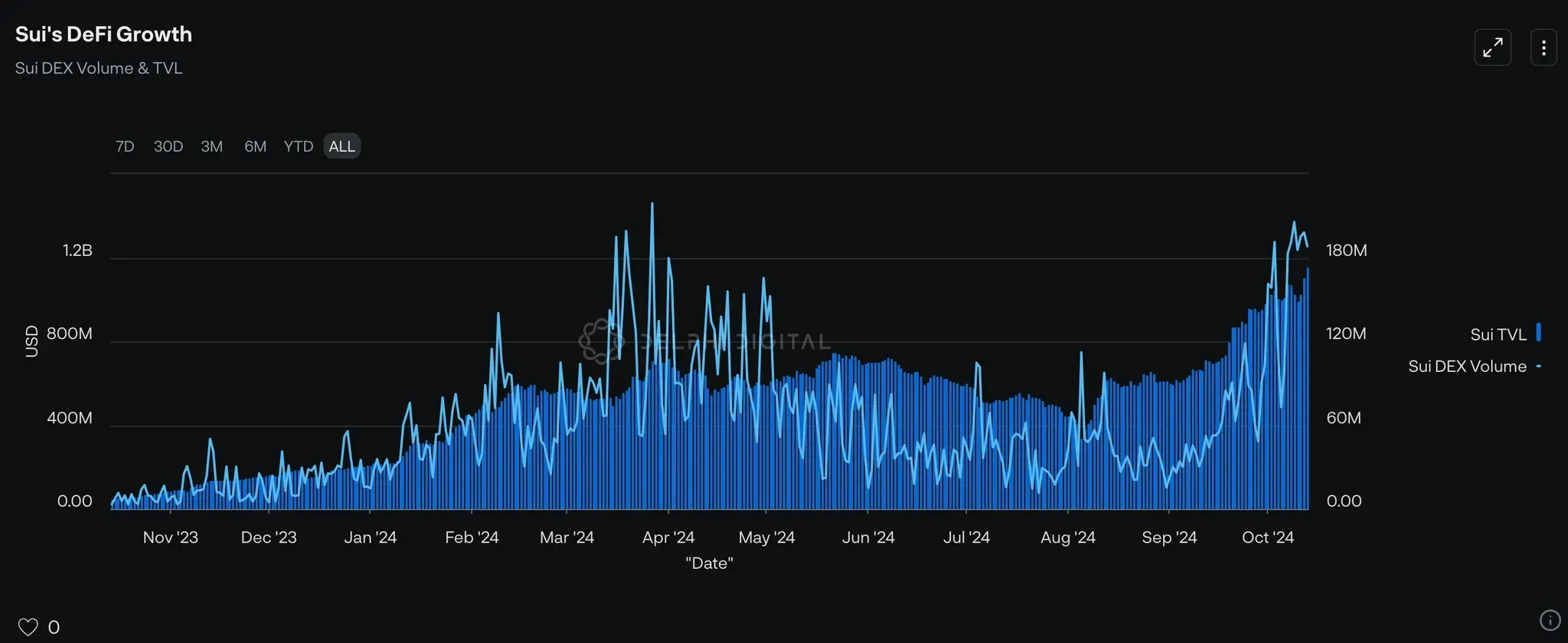Sui is a DAG-based network that executes transactions in parallel. As a DAG-based network, it relies on multiple proposers to create blocks in a given epoch. The idea of using multiple concurrent proposers has been discussed within Ethereum’s and Solana’s ecosystems to increase throughput and decentralization. Sui and Aptos use MCP in production as of today.
 https://arxiv.org/pdf/2310.14821
https://arxiv.org/pdf/2310.14821Sui initially used Bullshark as its consensus protocol and has now transitioned to Mysticeti. This affects how transactions are disseminated and the consensus is reached. This article attempts to understand how transactions are executed on Sui and its evolving MEV landscape.
Sui has been live on Mainnet since May 2023, processing $21Bn in DEX volume. Sui’s TVL crossed $1Bn in October 2024.

Emerging networks like Sui attract searchers because the level of competition tends to be lower initially, and fewer people have figured out how MEV can be extracted. Sui transitioned from using Bullshark to Mysticeti as its consensus mechanism and has several other upcoming changes in development that influence how transactions are executed and the consensus is reached.
To understand how MEV can be extracted in Sui, we need first to understand
-
What participants are involved in Sui transactions life cycle, and what role do they play
-
What the transaction life cycle looks like on Sui
The Participants
Full Node: The role of full nodes is to store the entire Sui state and history. They validate transactions across checkpoints and epochs. However, they do not sign transactions or participate in consensus. There is no stake requirement either.
Validator: The role of validators includes everything a full node does, including signing transactions, participating in consensus, voting on blocks, and monitoring the performance of other validators (as with Reference Gas Pricing). Unlike full nodes, validators have higher hardwa
...